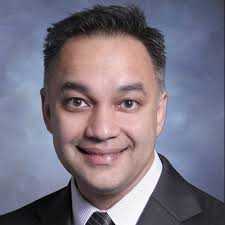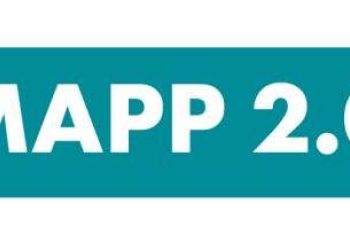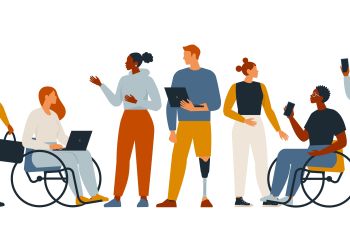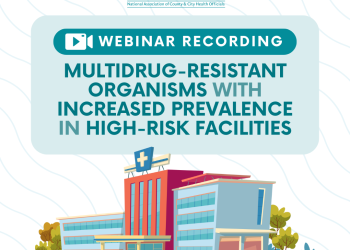 By Umair A. Shah, MD, MPH, NACCHO President and Executive Director of Harris County Public Health in Houston
By Umair A. Shah, MD, MPH, NACCHO President and Executive Director of Harris County Public Health in Houston
Local health departments (LHDs) play a critical role in ensuring that communities across the nation are healthy. We work every day to ensure the safety of the water we drink, the food we eat, and the air we breathe. Over time, many LHDs have broadened their missions and scope of services to address the root causes that influence health. It’s becoming commonly understood that factors like our socioeconomic status, education, the physical environmental, employment status, social supports, and access to care all play a part in shaping our health and quality of life. In addition to addressing infectious disease and chronic disease, we’re now focusing our efforts on the social determinants of health. With this increasingly complex view of health, it is imperative that LHDs move beyond the walls of our health departments to collaborate with the myriad other organizations that impact the social determinants of health and help them take into account how their policies and programs affect the health of communities. One promising tool for engaging in this work is the Health in All Policies (HiAP) framework.
What is Health in All Policies?
HiAP is a change in the systems that determine how decisions are made and implemented by local, state, and federal governments to ensure that policy decisions have neutral or beneficial impacts on health determinants. The approach focuses on changing systems of decision-making as opposed to changing a single decision. HiAP acknowledges that health is greatly influenced by initiatives that are usually managed by non-health governmental agencies. This makes is an especially useful tool for addressing health inequity. A critical aspect of our jobs as public health practitioners is examining why certain populations bear a disproportionate burden of disease and mortality and what social arrangements and institutions generate those inequities. HiAP provides us with an opportunity to eliminate or reshape policies that generate health inequity. When we compel policymakers to integrate health considerations into non-health sector decision-making, we compound our ability to improve the social determinants of health inequity.
LHDs can greatly improve population health through policy, systems, and environmental change strategies by engaging non-health partners and stakeholders such as city officials, developers, advocates, planning or transportation departments, community-based organizations, and local businesses. The field of local public health has identified seven strategies for integrating HiAP into decisions and systems at the local level: (1) develop cross-sector relationships; (2) incorporate health into decision-making; (3) enhance LHD workforce capacity; (4) coordinate funding and investments; (5) integrate research, evaluation, and data systems; (6) synchronize communications and messaging across all sectors; and (7) implement accountability structures. While HiAP implementation looks different in each local context, these seven strategies provide LHDs with a roadmap for embarking on their HiAP journey.
Local Jurisdictions across the United States Implement HiAP Initiatives
Throughout the United States, LHDs are applying these seven strategies for implementing HiAP to improve their community’s health status. Several states such as Vermont and California have developed Health in All Policies task forces that have helped institutionalize health considerations across sectors and government agencies. Many city and county governments have also demonstrated a commitment to implementing a HiAP approach.
In Prince George’s County, MD, the county council has passed an ordinance requiring the planning board to refer site, design, and master plan proposals to the health department for health impact assessments. The ordinance also requires the planning board to recommend design components that increase positive health effects and minimize adverse health outcomes.
In Louisville, KY, the Mayor convened a team, modeled after the National Prevention Council, that includes key leaders from metropolitan government departments that impact residents’ ability to make healthy choices in their homes, childcare facilities, educational and recreational facilities, workplaces, and neighborhoods.
In New Orleans, the New Orleans Health Department convened a community health improvement planning process in 2011, which resulted in its first city-wide community health assessment and community health improvement plan in over 10 years. With a multi-sectoral approach to addressing health determinants already in place, the process helped to establish a more strategic way to implement HiAP in New Orleans.
In Washington, DC, former Mayor Vincent Gray issued an executive order that established a HiAP task force comprising directors of the District’s departments of health and environment, external stakeholders, and HiAP experts. In January 2015, the task force issued recommendations for a proposed HiAP program in the city.
NACCHO’s Efforts to Support Local HiAP Implementation
Integrating health considerations into the policymaking process is essential for addressing the complicated web of factors that influence health. However, it poses a few challenges for LHDs. As a new approach, it represents a culture shift for many agencies and requires strong leadership and a nuanced understanding of the local political landscape and community needs. Additionally, because HiAP is still in its formative stage, there are not yet a formal set of best practices upon which LHD leaders can draw.
NACCHO’s HiAP program seeks to understand the challenges of LHDs, build LHD capacity to implement HiAP, and collect and disseminate best practices to advance practice in the field. In February, NACCHO published a seminal report about LHDs’ experiences with HiAP. It presents key findings from a qualitative assessment of LHDs, highlights promising practices, and offers recommendations for implementing HiAP at the local level. NACCHO has also developed a variety of resources to help LHDs, including a policy statement, a HiAP toolkit, and a webinar.
Conclusion
Many of the policies created by non-health agencies affect the health of communities across the nation. To successfully ensure these policies positively or neutrally affect health, it is imperative that LHDs collaborate across sectors and agencies. HiAP can provide a critical framework for helping LHDs engage in this work and strengthen these important partnerships. NACCHO will continue to identify best practices and resources to help LHDs further HiAP implementation in their communities.
Resources
NACCHO HiAP Webpage – http://bit.ly/2gA6Uuz
Report – Health in All Policies: Experiences from Local Health Departments – http://bit.ly/2lL8D4e
NACCHO Exchange: Heath in All Policies – http://eweb.naccho.org/prd/?na580pdf
NACCHO’s HiAP Policy Statement – http://bit.ly/2wPkWCK
Environmental HiAP Toolkit (Select from dropdown menu) – http://bit.ly/2iF7ZVV
CDC’s HiAP Resource Center – http://bit.ly/2vpcKcd






